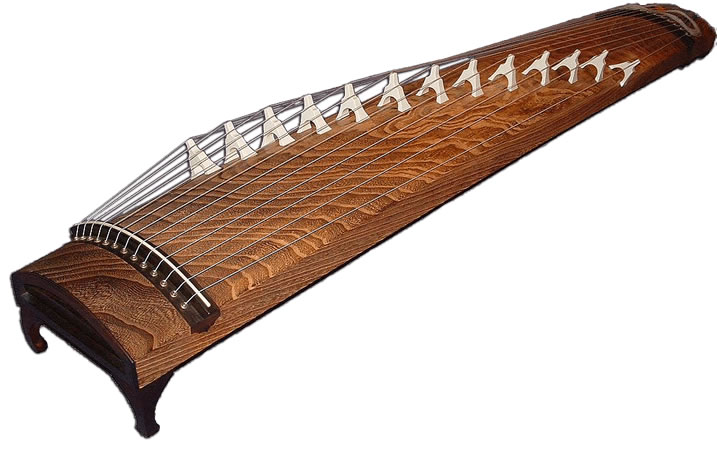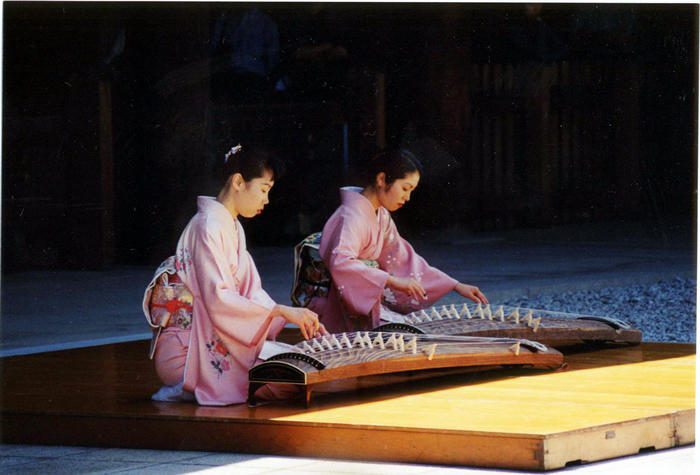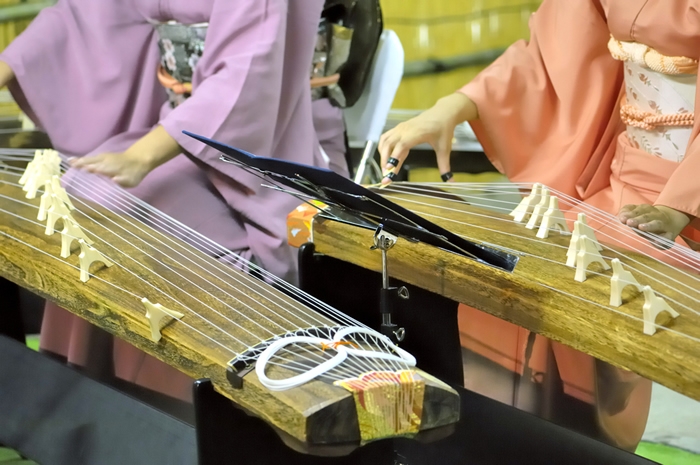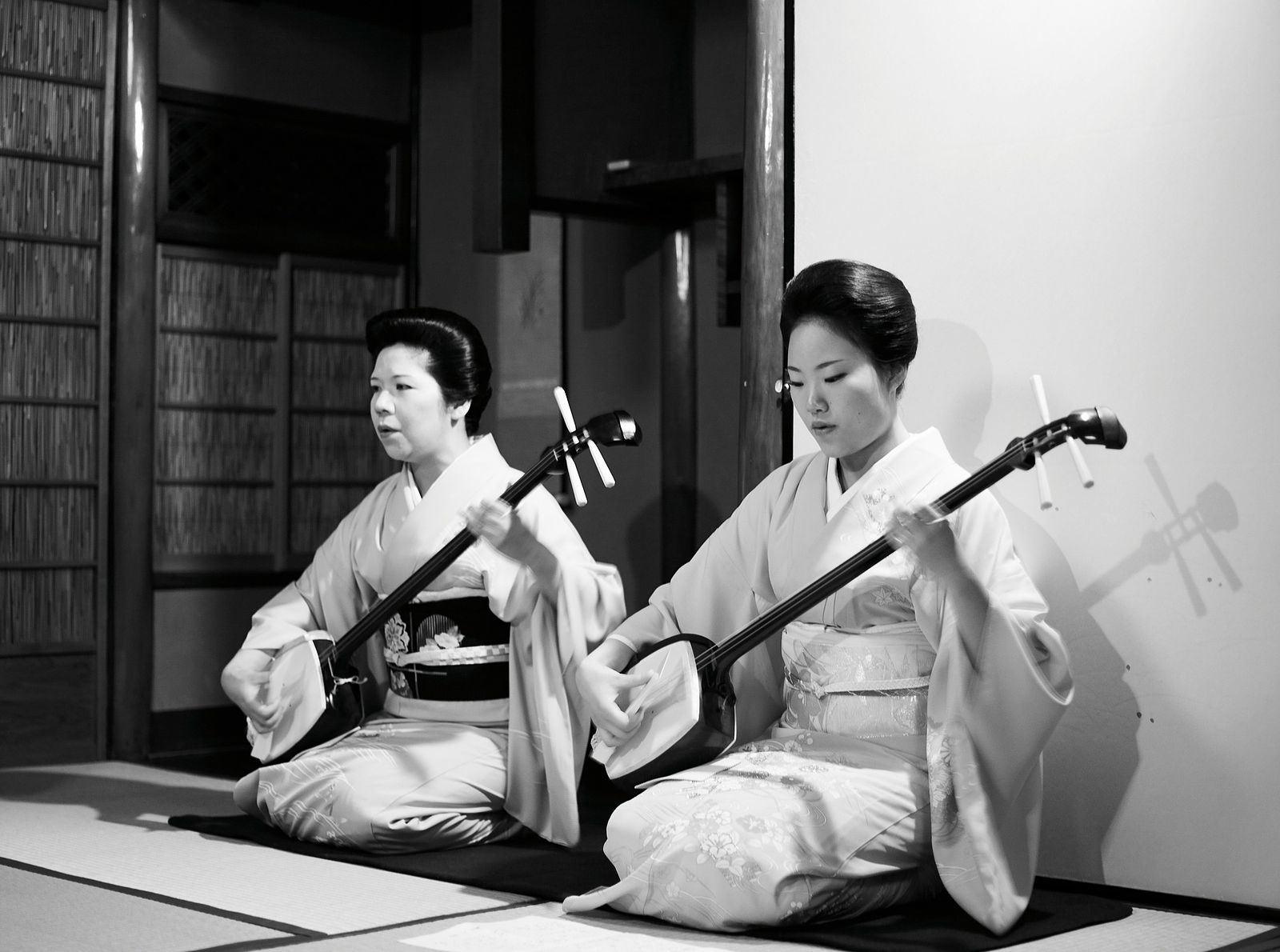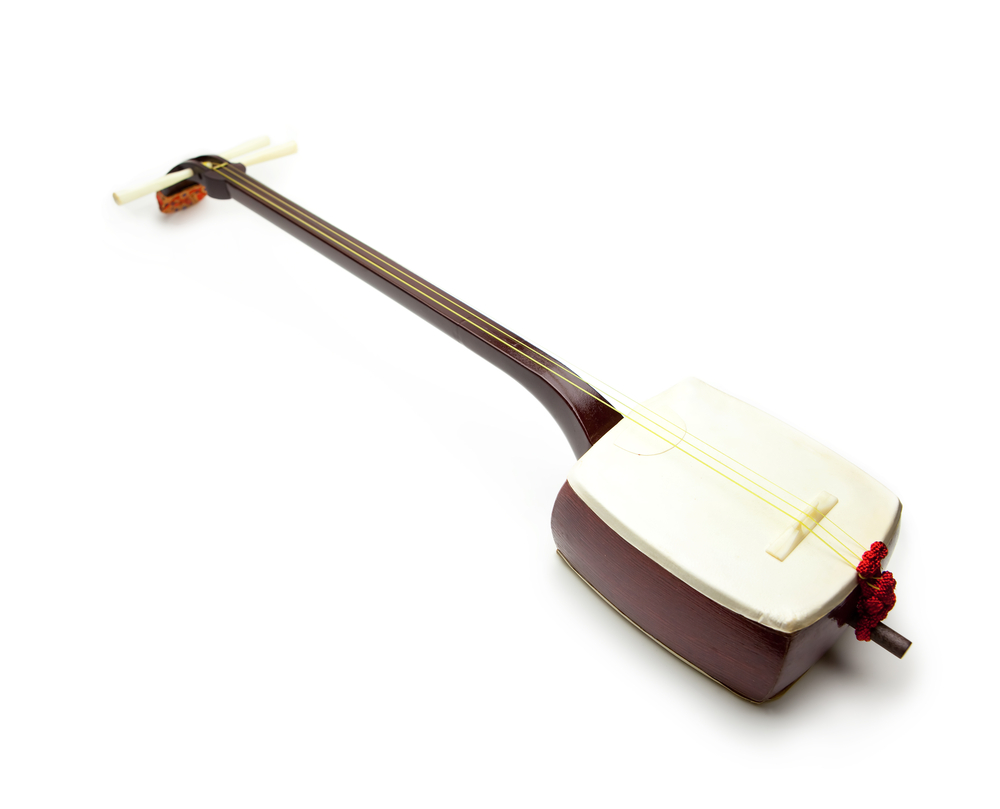
Japanese Instruments: Koto and Shamisen
A variety of Japanese instruments have long, colorful histories. Here we will explore four of these instruments, their music, and their unique pasts.
Koto
The koto is a bridged zither with an uncertain origin. Almost identical to the gakusô of gagaku, the koto is made of pawlonia wood and has seventeen silk strings. The player plucks the strings with three finger-picks on the right hand and a movable bridge tunes each string. The left hand alters the tension of the strings, pressing down on them left of the bridges. This creates ornamental sounds and additional pitches. Because the koto's tone is very pure, musicians often scrape the strings to produce a more textured sound.
Solo koto music is known as sôkyoku. Sô is another word for koto and kyoku means music. The koto itself comes from the gakusô of the gagaku orchestra, but the koto music popular today dates back to the Edo period. The instrument gained popularity with the rising commercial class, as well as with women who lived in the homes of nobility. The koto is related to the Chinese zheng and the Korean kayagum.
Modern koto music began in the late 16th century when a Buddhist musician-priest named Kenjun (1534?-1623) composed the koto style called tsukushigoto. He compiled pieces of solo koto music from the island of Kyushu. He also composed ten songs, called kumiuta, for voice and koto. Together, these pieces comprised the tsukushigoto style. Kumiuta takes a series of short poems and sets them to music. They are sung in a specific order. Kenjun's kumiuta compositions were influenced by gagaku with regard to tuning, technique, and instrument construction. Usually performed in temples, tsukushigoto's aim was contemplation rather than entertainment. Only educated men were allowed to play this music, otherwise forbidden to women and blind musicians.
A student of Kenjun's, Hōsui, defied this rule by teaching a blind musician, Yatsuhashi Kengyo (1614-1685), the basic songs of tsukushigoto. The "uneducated" musician then used tsukushigoto to create a new form of koto. To satisfy more popular preferences, Kengyo added new playing techniques as well as elements of popular shamisen music.
There are some instrumental pieces written specifically for the koto; however, most koto music calls for the instrument merely as accompaniment. Kumiuta is based on the original 16th century meter of its poems, which used a phrase length called dan. Dan varies from 64 to 120 beats. Each dan varies and develops the original melody. Purely instrumental koto pieces, called danmoto, also exist. They are comprised of several dan. One of the most famous danmoto works is Rokudan, which literally means Six Sections.
The koto survived the Meiji period because its beautiful, harp-like tones fit Western aesthetics of music. Although many contemporary koto pieces have been written, listeners still prefer the instrument's traditional repertory.
Shamisen
The shamisen is a three-stringed plucked lute often used to express emotion and drama, which makes it an excellent instrument for the theatre. The shamisen descends from the lutes of China, Okinawa, the Middle East, and Central Asia. A square-shaped wooden box forms the body, and both sides are covered with cat skin or plastic. The neck is constructed from wood.
A plectrum, bare fingers, or fingernails are used to strum the three strings, which are each a different thickness. When the lowest string rests on a special cavity that allows all three strings to resonate in sympathetic vibration, the shamisen buzzes. This intentional sound, which Western ears often hear as noise, illustrates the Japanese aesthetic we discussed earlier.
The shamisen, the geisha's principle musical instrument, originates from the teahouses of Tokugawa Edo (present-day Tokyo) they would frequent. Geishas played kouta, a song form lasting one to three minutes. The kouta, which reflects the world these women inhabited, often contain clever lyrics that subtly refer to romantic or erotic themes





Although Bon is a religious festival in Japan, most Bon dancing songs are now secular in nature.





